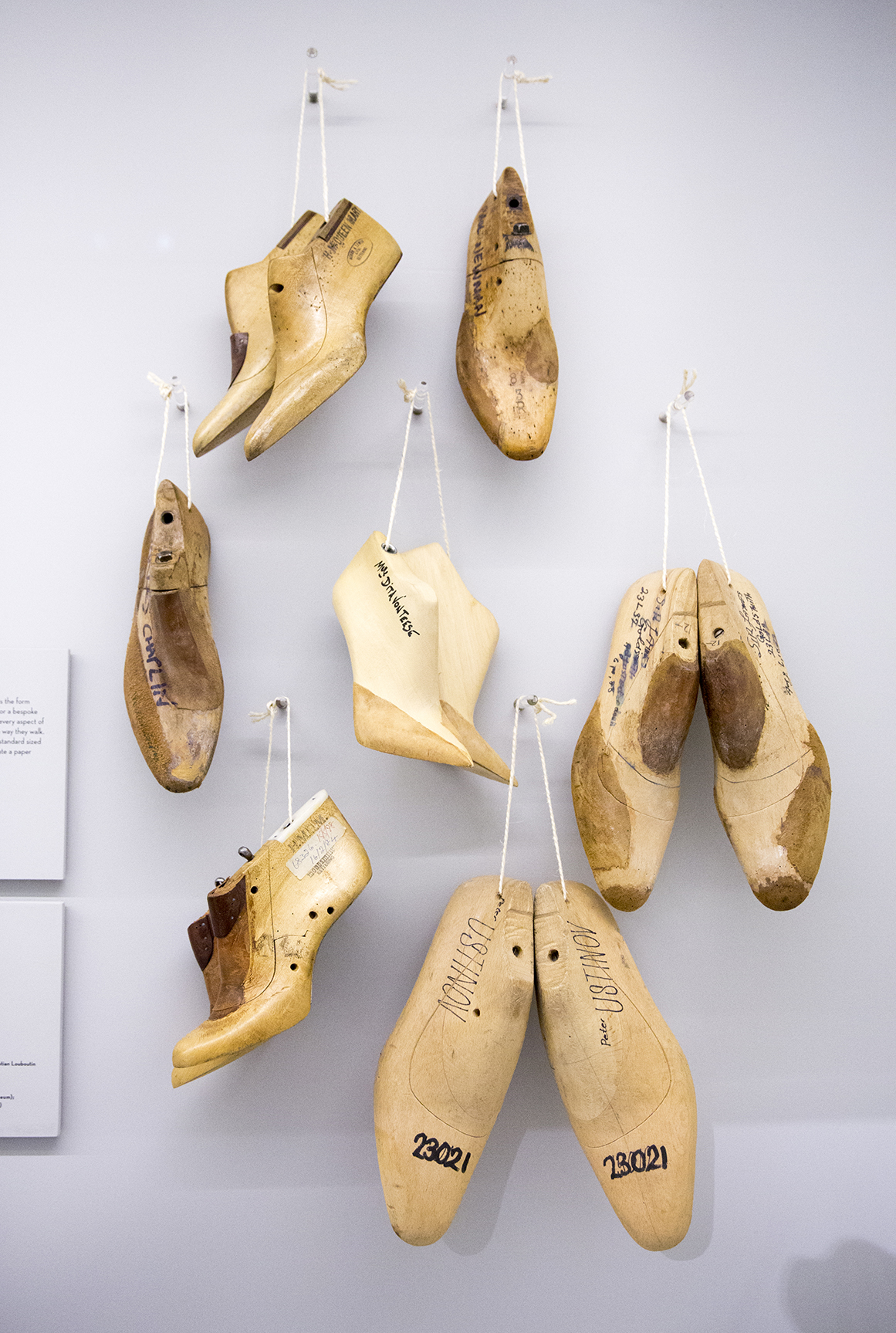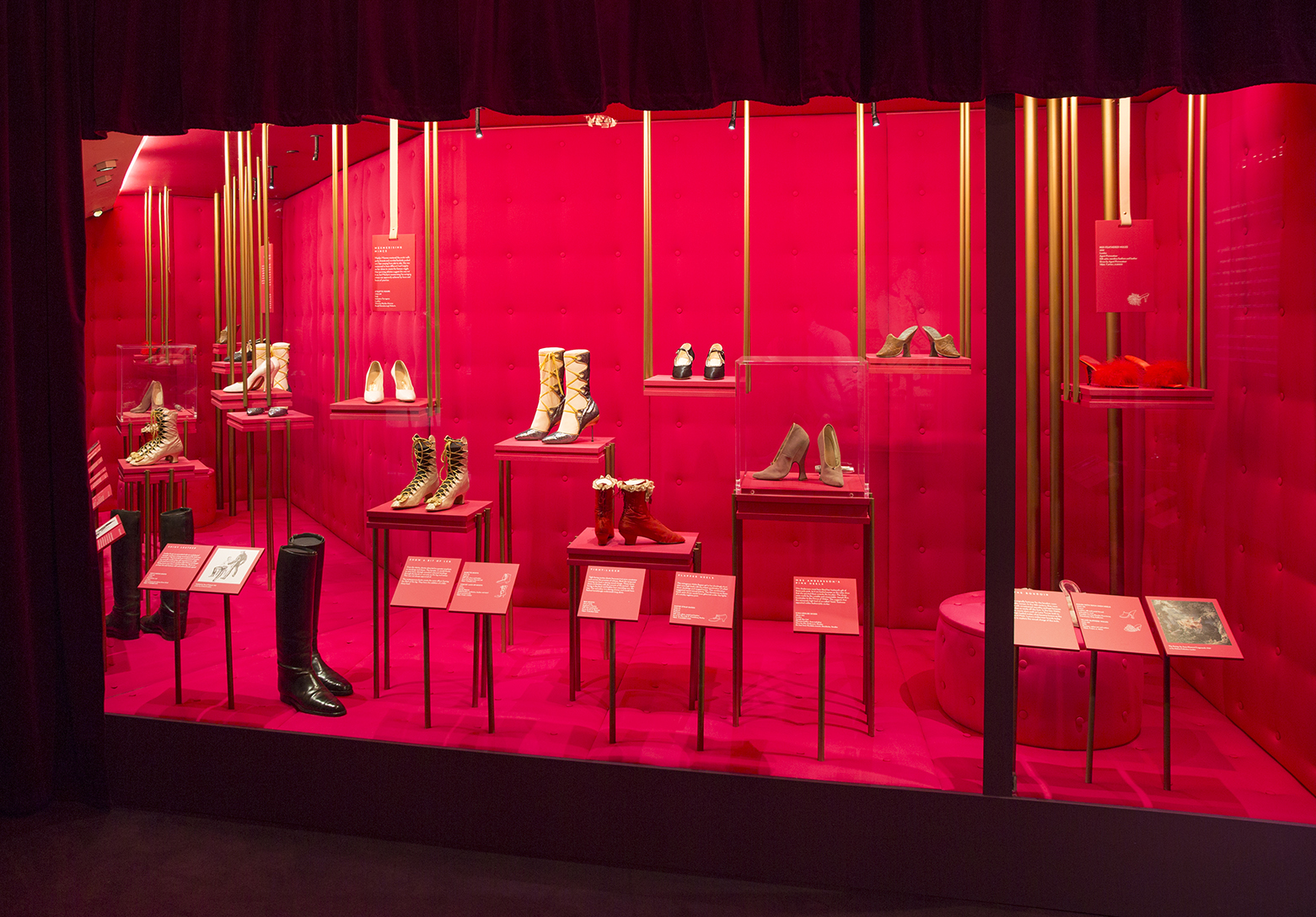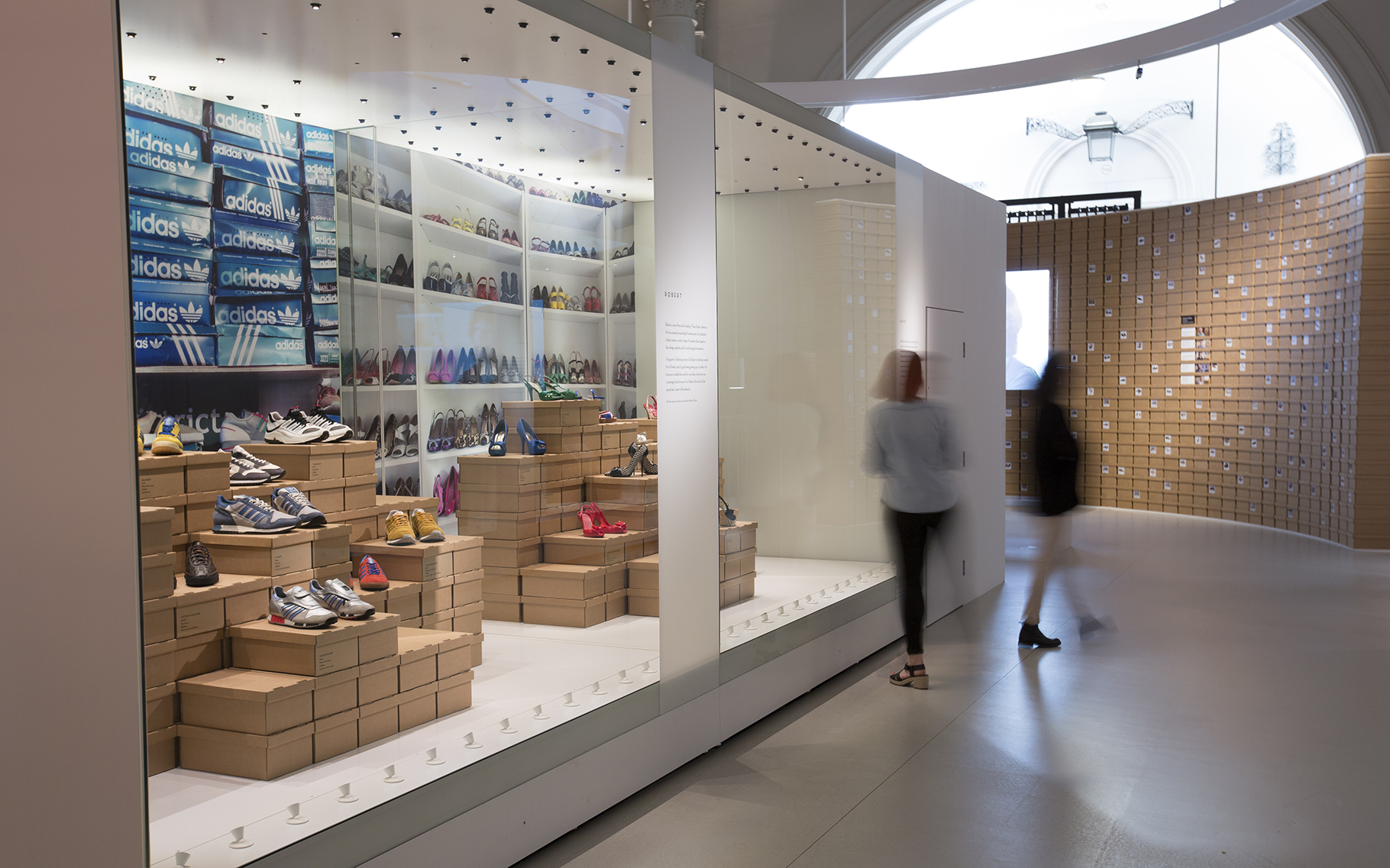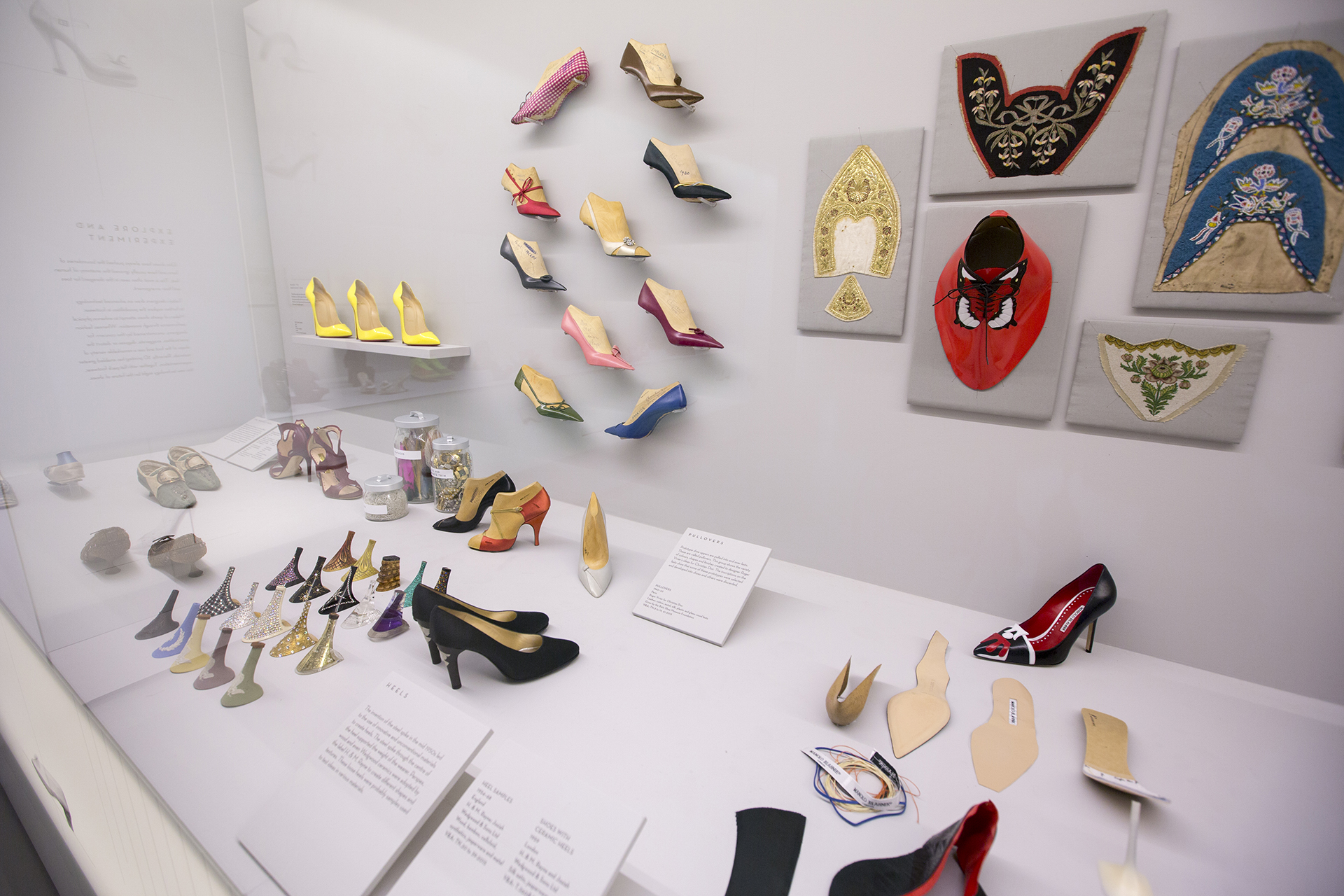Three exhibitions about shoes are currently on display in London. The biggest one, Shoes: Pleasure and Pain at the Victoria and Albert museum, explores the transformative power of footwear from around the world presenting over 200 pairs of the most extreme shoes from the last 2000 years. Artist, shoe designer, curator and Address contributor Ellen Sampson visited the exhibition.

Installation view of Shoes: Pleasure and Pain. Source: Victoria and Albert Museum, London
It is a strange thing to attend an exhibition that concerns one’s own practice. One is flattered that one’s profession and the type of objects you produce merit the attention and analysis of a major museum. For shoemakers, whose artefacts were for years seen as, at best, addenda to “real fashion” and at worst a hindrance to good display (one nameless museum is famous for having drilled holes in its footwear collection in order to fix them more firmly to the mannequins), this feels particularly refreshing. However as both a shoemaker and a fashion academic, it was hard not to view this exhibition from my own loaded and critical standpoint. I am a more critical and less forgiving viewer; I struggle with the omissions and assumptions that any new overview brings.
Despite my own biased position, the Victoria and Albert museum’s Shoes: Pleasure and Pain is a wonderful exhibition about shoes. The institution has bought together an extraordinary collection of shoes whilst drawing sharply into focus the shoe as a status symbol, an erotic object and as an object of design. The exhibition curator Helen Perrson has chosen a varied and beautiful collection of footwear and has invited us to look closely at it. The viewers are compelled in this viewing to think about the role of the shoe, not merely as a foot protector or decorative object, but as an item of material culture deeply embedded in the way we live our lives. The shoe is presented as a symbolic artefact, capable of conveying a multiplicity of meanings; status, wealth, modernity and erotic potential, all bounded within its material form.

Installation view of Shoes: Pleasure and Pain. Source: Victoria and Albert Museum, London
This exhibition space, the central circular area of the Victoria and Albert museum’s fashion galleries and the mezzanine above, is notoriously difficult to use. And I think in this case the curatorial team have made an excellent attempt to work with, rather that against, its limitations. The downstairs, which has no natural light, has been made darker lending itself to the themes of fairytale, fetish and desire. Upstairs in the brightly lit mezzanine space, the exhibition focuses on the technologies and the practices of making shoes and the practice of obsessive collecting.
Downstairs the curved space of the lower gallery is a sea of red plush and mirrors. This bordello-like space recalls the Christian Louboutin exhibition (2012) at London’s Design Museum, where a holographic Dita von Teese, performed a perpetual striptease in the designer’s shoes. The shoe, it seems, is inseparable from sex.
Starting with a cabinet on fairy-tale, where actress Moira Shearer’s iconic Red Shoes nestle with glass slippers and golden sandals, this section broadly addresses the shoe as an object of desire. In fairytale(s) they are lusted after, through sex they are fetishized and in contemporary culture they are an object of status, celebrity and wealth. The artefacts here are extraordinary shoes, far removed from the functional and everyday.

Installation view of Shoes: Pleasure and Pain. Source: Victoria and Albert Museum, London
The upstairs section is perhaps less successful. While the display is striking lovely, archival shoeboxes used both as shelving and to create a curving, amphitheatre-style screening space, this area feels somehow depersonalised and disparate. It is divided into two sections on collecting and making shoes. The making section, which consists of heels, pull-overs and lasts, is a little too clean, too seamless, quite unlike the spaces in which these shoes are made. It feels removed from the material and bodily experience of making a shoe. The items here are beautiful, Rayne Wedgewood heels and Roger Vivier lasts, but they do not seem representative of the realities of shoe-making or the politics of production in a globalised world.
When I visit the show for a second time with a friend (also a shoe designer), the ‘collectors section’ confused her. “Who are these people?” she asks, unsure of the role or biography of the collectors who had amassed such hordes of shoes. It seems a shame that more was not made of the motivations and methodologies employed by these acquisitive souls. The collection of Leonard Bussey, who collected women’s shoe in the mid 20th century, alone would merit an exhibition.
That, I think, is the issue with this exhibition. It displays beautiful and fascinating artefacts and contextualises them in terms of technology, folklore and status, but the personal is almost completely absent: the owners (and to some extent the makers of these shoes) are not here. Footwear, one of the most intimate and bodily of garments, is rendered near bodiless. The shoe is presented as an item of status, conspicuous consumption or design but the wearer and the experience of wearing shoes are barely addressed. It would have been helpful, I think, to include some personal narratives or a little more social history, to talk of bodily experience, of walking and dancing, of use and wear. To examine shoes as artefacts that impact upon the comportment of the body and the lived experience of those who wore them.

Installation view of Shoes: Pleasure and Pain. Source: Victoria and Albert Museum, London
Recommended reading
- Shoes: Pleasure and Pain (2015) by Helen Persson
- Fifty Shoes that Changed the World (2009) by Design Museum
- Shoes: A brief History (2015) by Lucy Johnston
- ”Shoes: Pleasure and Pain’ at the V&A: Charting fashion’s most enduring obsession’ (2015) in The Independent by Camilla Morton
Ellen Sampson
Ellen Sampson is an Artist, shoe designer, and curator based in London. She is currently undertaking a PhD at Royal College of Art. Her research addresses the relationship between footwear, the body and memory.

